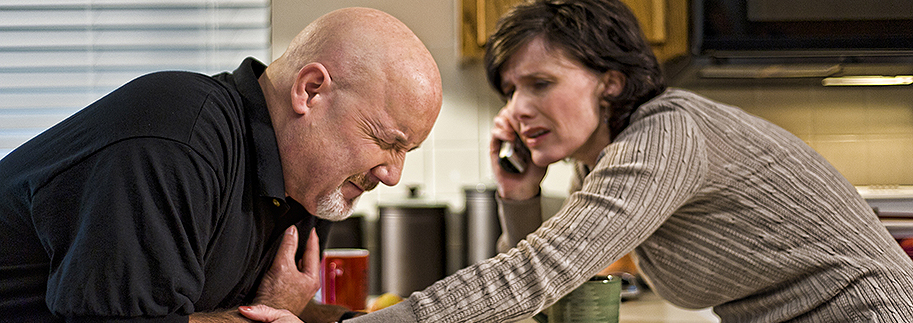Signs & Symptoms of a Heart Attack
What is a heart attack?
A heart attack (myocardial infarction or MI) is usually caused by a blood clot, which stops the blood flowing to a part of your heart muscle. When you have a heart attack, a coronary artery or one of its smaller branches is suddenly blocked. The part of the heart muscle supplied by this artery loses its blood (and oxygen) supply if the vessel is blocked. This part of the heart muscle is at risk of dying unless the blockage is quickly removed. The term myocardial infarction (MI) means damaged heart muscle. (Tidy, 2017)
What are heart attack symptoms?
- Chest Pressure, squeezing or burning
- Shortness of Breath
- Back pain
- Nausea
- Anxiety
- Jaw Pain
- Pain that travels down one or both arms
Is there a difference in symptoms between men and women?
Heart attack symptoms can be different between men and women. Why does it matter? Women are less likely to seek immediate medical care and are more likely to die.
- Men normally feel pain and numbness in the left arm or side of chest, but in women, these symptoms may appear on the right side.
- Women may feel completely exhausted, drained, dizzy or nauseous.
- Women may feel upper back pain that travels to their jaw.
- Women may think their stomach pain is the flu, heart burn or an ulcer.
What should you do if you think you or someone is having a heart attack?
Dial 911 for an ambulance IMMEDIATELY and say you think someone is having a heart attack.Helpful Links
Heart Disease Facts. (2017, August 24). Retrieved September 2017, from Centers for Disease Control and Prevention: www.cdc.gov/heartdisease/facts.htm
Rull, G. M. (2017, March 24). Patient:Making Lives Better. Retrieved September 27, 2017, from Percutaneous Cornary Intervention: patient.info/doctor/percutaneous-coronary-intervention
Tidy, C. M. (2017, September 24). Patient Making Lives Better. Retrieved September 26, 2017, from Heart Attack (Myocardial Infarction) : patient.info/health/heart-attack-myocardial-infarction-leaflet

